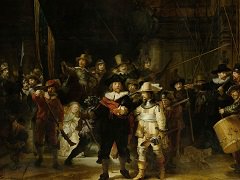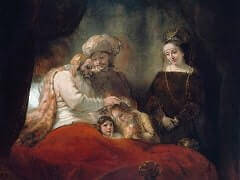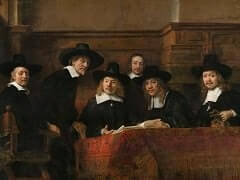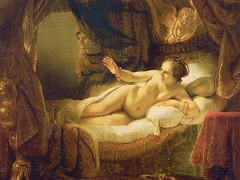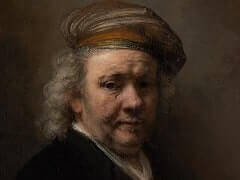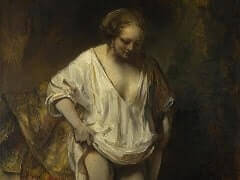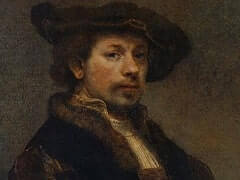The Raising of the Cross, 1633 by Rembrandt

Rembrandt was one of the few Dutch artists not to have travelled to Italy to study the works of the Italian masters. Although he was encouraged to go there by a number of people, he protested that he was too busy; in fact, he barely left his home country at all. Italian works were readily available in Amsterdam; many copies and engravings were in circulation, so Rembrandt was well aware of their content and style. This lack of travel did not seem to have hindered his career. His erstwhile advocate, Constantijn Huygens, had promoted his work to Frederik Hendrik, Prince of Orange, who gave Rembrandt a commission to paint a series of paintings based on the last events of the earthly life of Christ, commonly known as 'The Passion of Christ'. The standard five works in the series are: 'The Raising of the Cross', 'The Descent from the Cross', 'The Entombment', 'The Resurrection' and 'The Ascension'.
The Flemish painter Peter Paul Rubens had painted such a series for the cathedral in Antwerp and it seems that this was to be the Dutch Republic's grand statement on the subject. Rembrandt's series was to be smaller than that of Rubens and the measurements were carefully calculated, presumably with reference to the room in which they were to be displayed. All the works are rounded at the top, recalling the style of an altarpiece.
The Raising of the Cross, 1633 may have even been discussed with Huygens before Rembrandt left Leiden, as some drawings on this theme date from that time. The composition echoes that of Rubens' version of c. 1609-10, as does that of another painting in the series, The Descent from the Cross (1633). These two works were well received and the royal household commissioned the remaining three paintings. For The Ascension Rembrandt changed the style, possibly to please Huygens who may have encouraged him to emulate Assumption of the Virgin by Titian, which he would have known from his time as a diplomat in Venice.
In 1636 Rembrandt was called to the court to account for the difference in this work as compared to the first two pieces. The final two works in the series were finished in 1639 and although the royal commission was a boost to his career, Rembrandt did have some difficulties in receiving payment for these paintings.


